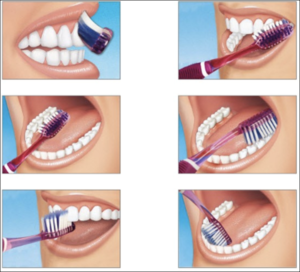Most of us here in Central Florida breathed a sigh of relief that Hurricane Dorian took that hard right turn and missed hitting us directly. However, we’re only halfway through storm season, and power outages are always a possibility for us here in the so-called Sunshine State. While we always champion the benefits of a good electric toothbrush here at Lake Baldwin Dental, all this hurricane talk got me thinking we should probably review how to use those old-fashioned toothbrushes, too!
Choosing a Brush
The most important factor when selecting a toothbrush is the “softness” of the bristles. When a toothbrush is described as “hard” or “soft,” what is actually being described is the width of the individual bristles. Hard bristles are thicker and stiffer, and soft bristles are thinner and more pliable. While it may seem like you’d want the harder bristles to really scrub your teeth, this is actually the opposite of what you want.
Always choose a soft or (even better) extra-soft toothbrush. The bristles are thinner and they can conform to the shape of your teeth better. Plus, they will be far gentler on your gums. Prolonged use of a hard toothbrush can lead to abrasions and even gum recession, as well as more tartar buildup.
Good Technique
Manual toothbrushes are far more technique sensitive than electric toothbrushes. What you want to avoid is long lateral “scrubbing” strokes. Instead, focus on short polishing strokes. Small circles are fine, or you can jiggle the toothbrush on one or two teeth at a time, then take a couple of downward strokes (meaning pulling the toothbrush from the gums, down toward the chewing/biting surface).
Make sure to keep the toothbrush angled at 45 degrees toward the gum line. Concentrate on brushing at the gum line, but make sure to keep your pressure light.
Don’t cut yourself short, either! One benefit of the electric toothbrush is that it times you for 30 seconds in each area. Do the same thing with your manual toothbrush. Actually time yourself if possible. 30 seconds for the outside of the top teeth, 30 for the inside, 30 for the outside of the bottom, 30 for the inside. I usually take a few extra seconds for the tongue side of my bottom front teeth, too.
A Few Final Words
Whether manual or electric, all toothbrushes should be replaced every three months, or if the bristles are starting to fray. If your bristles curl out to the sides, you are brushing too hard! Whether electric or manual, your toothbrush should be used with nice light to moderate pressure.
And no matter what kind of toothbrush you’re using, it will work its best if you floss, too! I usually floss first to get the hard part out of the way. Most of us will skip flossing if at all possible, so try switching up your routine. Keep brushing, Orlando!



